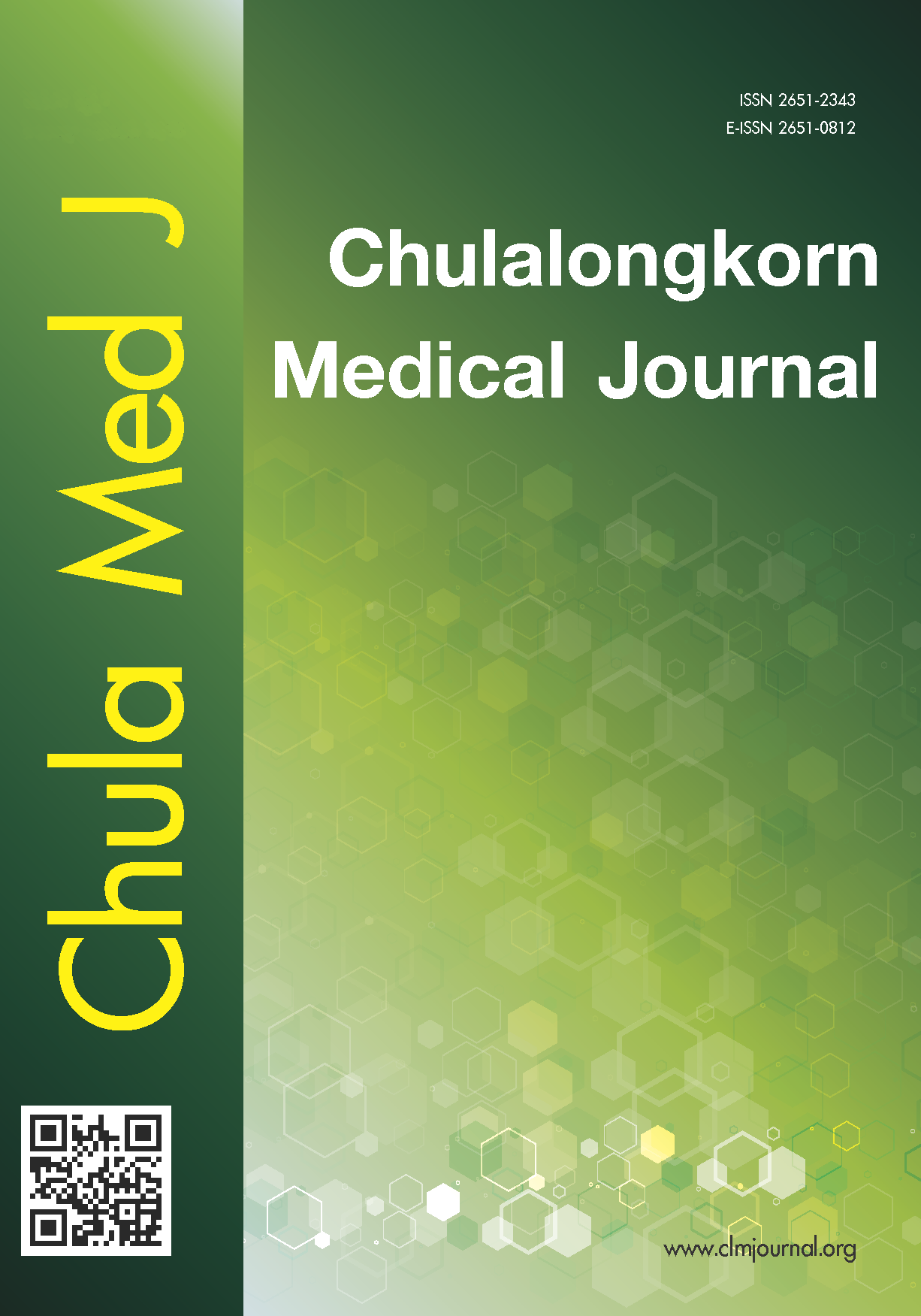Back and hip muscles with EMG biofeedback training in diplegic cerebral palsy to improve balance and gait: A randomized control trial
Main Article Content
Abstract
Background: Cerebral palsy has pathology in immature brain problems, i.e., ischemic brain, and hypoxic brain.
The cause of pathology can be prenatal, perinatal and postnatal. Electromyography (EMG) biofeedback is
a muscle training program using electrical stimulation modality to train specific weakness of the muscles or
pathologic side. A feedback response to the patients by visual or supporting sound can enable the patient to train themselves specifically. However, little evidences supports the efficacy of EMG biofeedback to train muscles in cerebral palsy, especially in balance and coordination.
Objective: To evaluate the efficacy of EMG biofeedback compared with conventional physiotherapy on gait
and balance in children with cerebral palsy diplegia.
Methods: Thirty-four children with diplegic cerebral palsy were recruited into the study. The EMG biofeedback
group included 17 children who received EMG biofeedback training in back and hip muscles plus conventional
exercise. The control group included 17 children who received only conventional exercise. Gait analysis, pediatric balance scale, range of motion of hip extension, abduction and 6-minute walk tests were evaluated and compared.
Results: Both the EMG biofeedback and control groups displayed statistically significant improvement in
pediatric balance scale (P <0.001 and P = 0.001, respectively). Only the EMG biofeedback group displayed
statistically significant improvement in gait speed, range of motion of hip extension, abduction and 6-minute
walk tests (P = 0.04, 0.003, 0.03, 0.003, respectively). No other statistically significant differences were found
between the two groups.
Conclusion: The EMG biofeedback group displayed statistically significant improvement in gait speed, pediatric balance scale, range of motion of hip extension, abduction and 6-minute walk tests. The control group, however, displayed statistically significant improvement only in pediatric balance scale.
